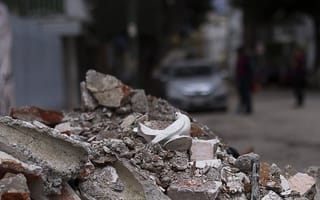
The devastating 7.1 magnitude in central Mexico on September 19th 2017 killed nearly 400 people. Now, a system called Pulse sold by the Mexico City-based company Grillo is outfitting buildings through Mexico with affordable sensors that can monitor shaking and assess structural damage, Science reports.
The outlet explains that while sensors are not new to earthquake engineering, the steep drop in the cost of sensors and data storage is a more recent development that scientists hope will be a life-saving one.
"It's been a dream of the engineering community for a long time," Thomas Heaton, a civil engineer and geophysicist at the California Institute of Technology (Caltech) in Pasadena, tells Science.
Structural health monitoring is a field he likens to "taking a building's blood pressure" and the continued monitoring of building in seismically at-risk regions is a dream he believes can finally now be realized.
By focusing on building with standardized designs, Grillo can keep costs down to $1000 or less, says Science. A similar system called P-Alert made by Taipei-based San Lien Technology also follows this model.
"If you have sensors installed, you can quickly identify damaged and not-damaged buildings, and focus on the potentially damaged buildings."
Pulse is not a substitute for expert inspections, but it help experts determine how to prioritize their work in the aftermath of a quake. The sensor system could also alert people of unseen damage. Science cites a tragic example in which 50 minutes after the shaking stopped in Mexico's 2017 earthquake, workers had returned to a four-story office building in Mexico City, which then collapsed.
"If you have sensors installed, you can quickly identify damaged and not-damaged buildings, and focus on the potentially damaged buildings," Yih-Min Wu, a seismologist at National Taiwan University in Taipei who developed P-Alert, explains to Science.





.jpeg)
